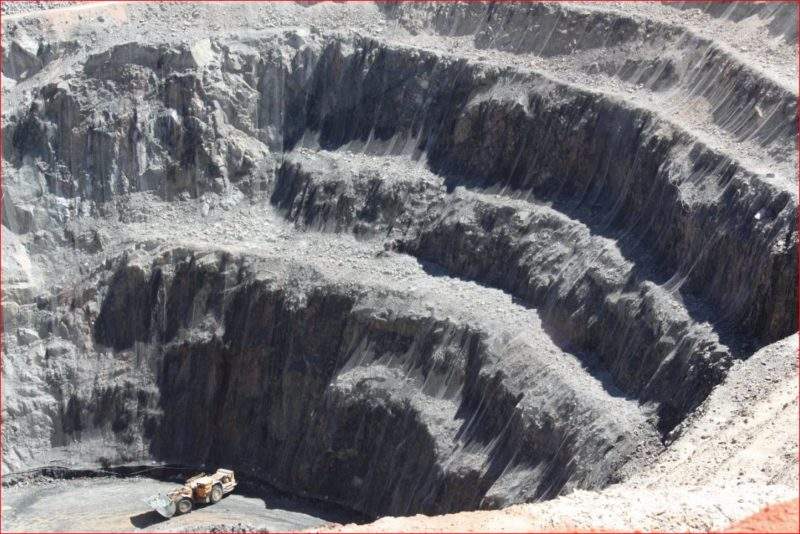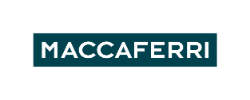
Rockfall solutions for open-pit mines should be carefully customized following an analysis of site-specific natural and anthropogenic risks. Our extensive experience in rockfall protection systems and natural hazard mitigation, makes us the ideal partner in designing and installing reliable solutions to stabilize rock faces, reducing risks and costs for mine owners.
Open-pit mine safety and operations can be threatened by rockfall hazards, which can cause serious disruption to mine productivity and result in significant financial losses. This problem should be addressed with a targeted approach, as each specific site requires an analysis of its particular natural and anthropogenic risks.
When designing rockfall solutions for mines, we take into account a series of parameters, including geology, slope morphology, hydro-meteorological conditions, vegetation and loads from equipment. This allows us to design an optimal engineering solution choosing the most appropriate products from our wide range of Mac.RO™ systems, depending also on the tasks to be performed:
- Our Steelgrid® high-strength mesh is ideal for drapery on high walls, containing rock detachment, and to provide surface stabilisation on areas prone to slippage
- Our HEA (High Energy Absorption) Panels in conjunction with ground or rock anchors are the ideal solution to protect rock slopes with a high degree of fracturing
- Our dynamic barriers, with energy absorption up to 8,500kJ, can protect haul roads, quarry machinery and other facilities from falling rocks
- Our rockfall embankments featuring soil reinforcement technology and providing repeat-impact protection of over 20,000kJ
Steelgrid® HR High-Strength Rockfall Drapery
Steelgrid® HR is used to protect open-pit mine slopes and high walls. It is a high strength, high stiffness steel geocomposite combining double twist mesh with high tensile steel cables, forming a single product, which can be easily deployed in hard-to-reach quarry areas, saving installation cost and time.
Steelgrid® is supplied to the construction site in rolls, which are deployed onto the rock or slope face. The mesh is used in two ways:
- As a high-strength ‘drapery mesh’ placed over the rock face where it contains rocks falling from the face. The rocks are allowed to fall, but are controlled and prevented from escaping from behind the mesh where they could disrupt infrastructure adjacent to the foot of the rock face
- As a secured drapery, in conjunction with soil nails or rock bolts. The Steelgrid HR is secured to the vulnerable rock face by the soil nails. The system stabilises the surface layers of the rock slope. Loads in the mesh are transferred back into the nails
Steelgrid HR offers high strength at a low strain; it does not deflect much under load. It is supplied as a kit of components including anchor plates, specific U-bolts and mesh connectors.
HEA (High Energy Absorption) Panels
Our HEA Panels are the stiffest products within our Mac.RO™ Systems mesh range offering extreme strength at low strain. The panels are woven from a single continuous length of high tensile strength steel wire rope, joined at each crossing point with the patented HEA ‘double knot’ connection.
Panels are designed for long-term static loads and when strapping unstable areas on rock faces.
In case of a rock movement, the whole load created by the fragmented material is transmitted to the knot connections and evenly redistributed to the entire mesh, so that the energy is dissipated.
HEA panels can be used alone or in combination with our Double-Twist mesh or Steelgrid® HR drapery systems to provide a composite solution that not only restrains large rock movement, but also contains smaller rock fragments.
Dynamic Rockfall Barriers
Sometimes it is not possible to anchor drapery and HEA panels due to the difficulty in reaching some slopes, cost or safety issues. In this case, dynamic rockfall barriers are deployed towards the foot of rock walls. Barriers are designed to arrest and catch falling rocks and boulders before they fall onto mine infrastructure, machinery and haul-roads. Our range includes barriers with certified energy absorption capacity from 500kJ to 8,500kJ. Our barriers offer the lowest maximum deflection under impact, and highest post-impact residual height in the market.
The most important element of the barrier is our patented compression brake, which absorbs the impact energy, transferring it throughout the barrier structure. The barrier consists of the brakes, support cables and posts, barrier panels and anchors with bracing cables. When impacted, the brake is progressively crushed, and the load is evenly distributed between the posts, thereby minimizing stress on all the elements of the barrier. When the compression brake has been triggered, there is no need to replace the entire barrier; it is only necessary to remove fallen rocks and replace the used components and compression brake.
All the barrier models have been successfully tested and certified to comply with ETAG 027. Barrier designs can vary in height, amount of energy absorption brakes / dampers, type of barrier mesh and other features.
Where even larger impact loads are expected, or where a large number of repeat impacts are likely, a rockfall embankment is a cost effective option.
Featuring soil reinforcement technology, we select geogrids to suit the available on-site soil materials. By re-using this on-site material as structural backfill to the embankment, we are able to provide a highly functional safety feature that is cost efficient.
These barriers utilise our Terramesh® and Green Terramesh® modular soil reinforcement systems, often in conjunction with our geogrids ParaGrid® or MacGrid®.
Our rockfall embankments can accept multiple rockfall (or debris flow) impacts without the need for maintenance, aside from emptying the captured fallen material from the uphill face.

